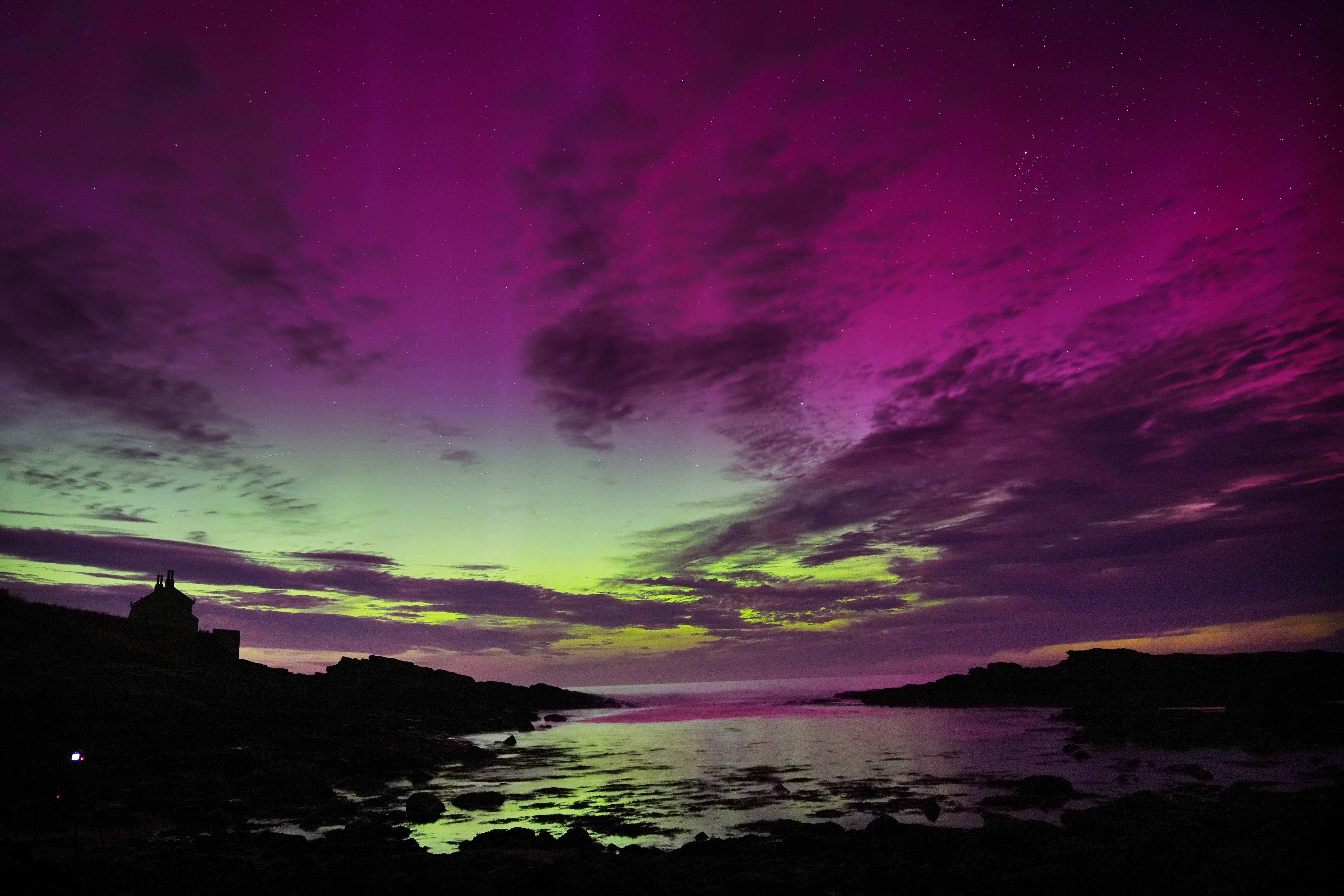
The Northern Lights could still be visible in parts of the UK this weekend after clear skies in Scotland overnight into Sunday.
In its latest update, the Met Office said visible aurora borealis is most likely on Sunday before easing to background levels through Monday and Tuesday.
“Through this evening and overnight, aurora sightings are possible over northern Scotland and potentially over much of Scotland where skies remain clear,” it said.
“There is perhaps a chance further south too, with long exposure photography.”
Met Office meteorologist Zoe Hutin said there is a “heightened chance” of seeing them due to the low cloud coverage and clear skies in Scotland.
She said the movement of solar winds around the sun at this time is leading to the “enhanced possibility of a sighting”.
“The further north you are, the more likely the chances are that you will be able to see them,” she said.
“They are more easy to see on cameras, so pictures often come up a little bit more clearly than by the naked eye and this is just because of the type of beam that it is.”

The sun has now entered its period of greatest activity, which means Britons could be seeing more colourful displays of the aurora borealis until the middle of the year.
The sun goes through an 11-year solar cycle, with periods of intense activity followed by a quiet phase.
During its active bursts, also known as solar maximum, the sun releases charged particles that travel through space at speeds of around one million miles per hour.
Through this evening and overnight, aurora sightings are possible over northern Scotland and potentially over much of Scotland where skies remain clear ✨
— Met Office (@metoffice) March 8, 2025
There is perhaps a chance further south too, with long exposure photography 📷 pic.twitter.com/V8WpEqiFml
Some of the particles are captured by the Earth’s magnetic field and collide with oxygen and nitrogen atoms and molecules in the atmosphere.
These atoms and molecules then shed the energy they gained from the collision, emitting light at various wavelengths to create colourful displays in the night sky.
According to Nasa, oxygen emits either a greenish-yellow light – which is the most familiar colour of the aurora – or a red light, while nitrogen generally gives off a blue light.
The oxygen and nitrogen molecules also emit ultraviolet light, which can only be detected by special cameras on satellites.
Northern Lights: Met Office reveals where the Aurora Borealis could be visible today
Five-year trends in data show pandemic’s lasting effects on wellbeing
Big Ben clock tower incident ends as man comes down
Protester arrested after 16 hours up Big Ben’s Elizabeth Tower
Lowe says he was ‘warned’ by Reform UK leadership over position on deportations







